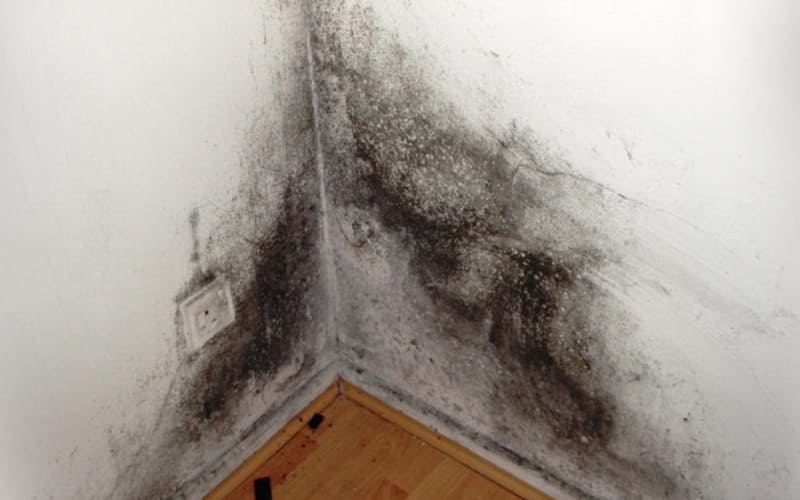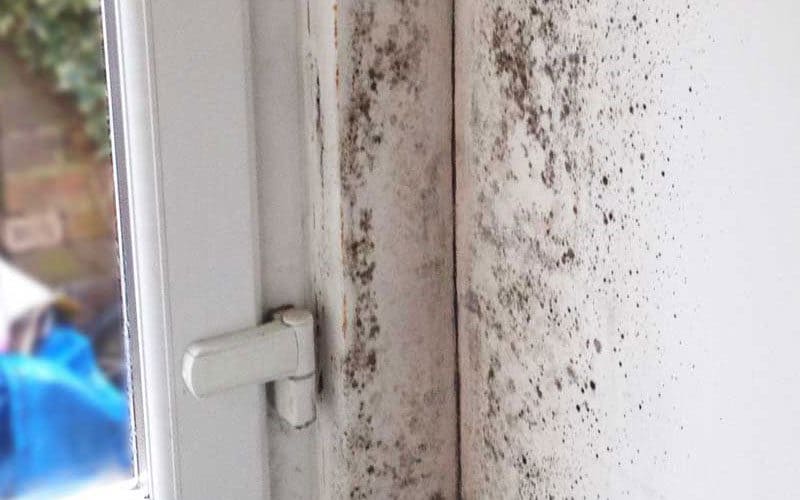Too high a humidity in the house?
Living comfort depends on several factors, heating, ventilation and relative humidity. The humidity in the house can be either too high or too low. Good humidity in the house is also important for other reasons. What you need to know about humidity in the house and what you can do about it we are happy to explain this to you.
SmartDry has been the specialist
in damp solutions since 2013
100% damp-free warranty.
We can solve your problem!
Sustainable solution: better
for your health and home
What is a healthy humidity value?
The humidity value within a home has to be managed so all homes should have a humidity meter, the seasons affect ambient humidity, good humidity levels make homes feel cool in summer and warm in winter. Typically, In Winter humidity should be kept between 40% and 50% and in Summer between 35% and 55% for maximum comfort.


What is Relative Humidity?
RH is the amount of water vapor present in air “expressed as a percentage of the amount needed for saturation at the same temperature.” As temperatures go up or down, the capacity of the air to hold water changes.
An example of this would be – If you take a room with the doors and windows shut and you vaporise 1 pint of water into the air, The air temperature at 20 degrees C and then measure the humidity value – and lets say the value was 60% RH – just by lowering the internal air temperature to 15 degrees C that would change the RH to 82% – and at 12 degrees C the air would be 100% saturated – This is the “Dew Point” – so lower temperatures of any surface below 12 degrees would be producing condensation – Which is what happens in winter time when your heating goes off overnight and those outer walls cool dramatically.
Another example of humidity creating condensation is a pint of lager on a hot summer’s day – the outer glass becomes wet and drips water as the very cold liquid cools the glass and the hot humid air that is around it cools – and thereby releases its moisture
How to manage humidity? Fortunately managing humidity is quite simple – three factors apply, Temperature, ventilation and controlling humidity generation.
Humidity Generators
People / pets – an adult will generate around 3 pints of moisture in their breath and sweating each 24 hour period, this is the way the body controls its temperature, children produce a little less and pets even lower – high occupancy homes are more at risk from high humidity values.
Cooking, Ironing, bathing, showering, rigorous exercise.
Regulating Temperature – The internal air temperature plays a crucial part in the overall relative humidity values – Increasing the temperature will reduce the RH value – likewise reducing temperature will increase the RH. The recommended temperature of a home should be between 19 degrees C and 22 degrees C, It makes no sense to keep increasing the temperature to control humidity if the generators are not managed, so the third strategy has to be deployed – Ventilation.
Ventilation – The ambient air humidity varies around the country – you can check your local humidity by simply typing “Weather” (then your post code) into a browser. Its not unusual to get 90% ambient humidity – but take a look at the temperature of the air – usually this is quite low – so raising the air temperature – as you would inside your home will substantially reduce the RH value.
Ventilation is important as it allows stale high humidity air to be diluted by the fresh airflow into the house, as fresh air enters it displaces the old air, the amount of ventilation has to be balanced against the current humidity generation – any room in use should have some ventilation taking place – even in winter time. Most modern UPVC double glazed windows have a ventilated position, just lift the handle – push the window open about 5 to 10mm and then lock the handle down again – the tiny gap in the window seal now exposed is sufficient in most case to provide adequate ventilation and keep check against humidity values rising too high, This ventilated position is as secure as the window being fully closed – so the security of the property is not compromised at all and can be left like this overnight or when the house is empty. Alternatives are also the addition of air vents to walls, trickle vents to window frames, air conditioning, PIV systems or PIV system with heat recovery – lots of choices and prices to suit budgets.
What are the consequences of too much humidity in the house?
When the humidity is too high, your home runs a number of risks. Fungi will flourish, mould will grow, condensation will become an issue, wallpaper will start to peel from the walls, paint will start to flake and crack, doors that used to open and close easily will swell up and cause sticking, drawers will not operate smoothly and bugs/insects will find a home in which to live.
Silverfish like humidity in excess of 75%, they are fast-moving, nocturnal insects that have many of the same habits as cockroaches. Like cockroaches, silverfish can trigger allergic reactions in some people, but are primarily nuisance pests that don’t bite and are not likely to spread pathogens that cause disease. However, they can contaminate food, damage paper goods and stain clothing, so you definitely don’t want them hanging around your home.
High indoor humidity fosters the apparition, growth, and spread of biological agents such as bacteria, viruses, and dust mites. Those are responsible for adverse health effects including infectious diseases, allergic reactions, hypersensitivity reactions and skin afflictions including: Common cold, flu, Asthma and other respiratory problems (wheezing), Eye, nose, and throat irritation, rhinitis, cough, Skin irritations: atopy, rashes, hives, Headache, fatigue and aches. Some people are particularly vulnerable, especially babies, elderly people, pregnant women and people with respiratory problems.
High Humidity – Impact on babies and children
Humidity has an even greater impact on babies and children due to their physiology and metabolism. These make them less effective in adapting to environmental changes, thus making them more likely than adults to suffer from dehydration, fatigue, heat exhaustion and so on. Besides, their immature immune system makes then more prone to develop infectious and other pediatric diseases such as pneumonia, mumps, gastroenteritis, and asthma
Other factors that increase humidity and the solution
If your property has wet walls because of Rising Damp or penetrating damp and excessive humidity your walls will already be saturated and unable to absorb more moisture resulting in humidity values soaring.
Walls are built with the intention of breathing, they absorb moisture / humidity and that permeates slowly through the wall until it meets either a cavity or the outer wall in a solid wall property, Non breathable paints should be avoided and we suggest Clay or lime paints to actively work against excessive humidity.
If the wall is saturated by damp then clearly it cant breath anymore, the SmartDry DryBrick will extract that moisture and return the walls to a more breathable state than was ever before, it will actively work to manage humidity and will ensure your walls remain dry in the future – you have our lifetime guarantee on this.
Our free survey with no obligation is carried out by a thoroughly experience surveyor. If our surveyor identifies issues of damp and we can provide a solution then he will present you with a quote – which is followed up with an official quote from SmartDry via our head office. Once you have that quote the next step is for you – the customer, to make contact with us
Plan a free damp assessment
Feel free to contact us for a free damp assessment or advice from our moisture expert.


